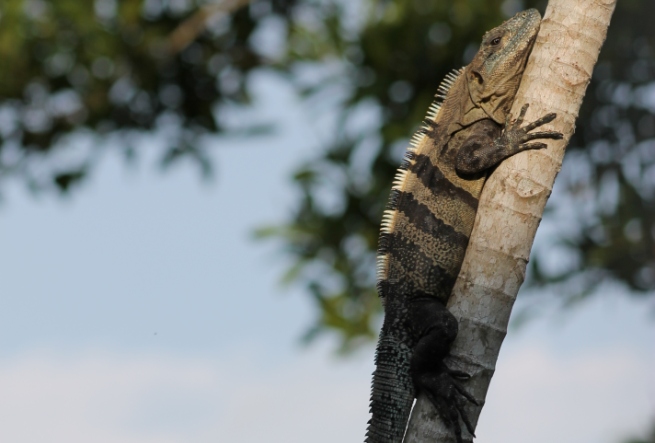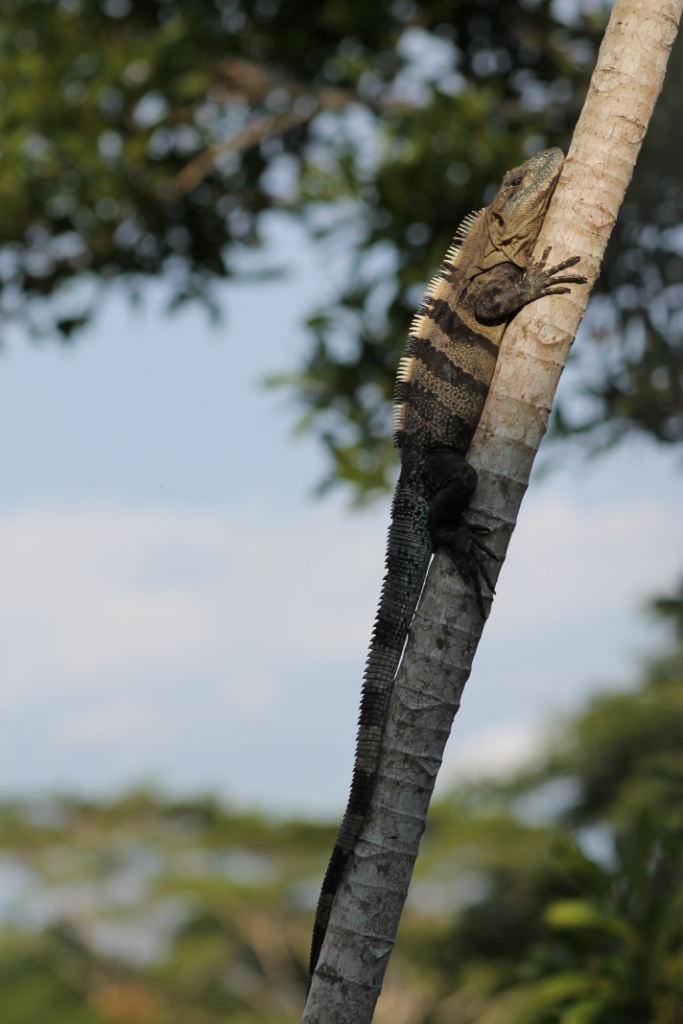Costa Rica Picture of the Day – Each day the Costa Rican Times will be including a picture from around Costa Rica to see the natural beauty and amazing things that we get to see each day in the land of the Pura Vida.
Ctenosoar is among the family of iguanid or as we know them iguanas. The Ctenosoar enjoys sunny perches on tree, rocks, fence post, boulders, etc. These animals don’t stray far from lowlands and mainly reside in beachside shrubbery, pastures, dry deciduous and moist forests. They range from the southern parts of Mexico to Panama.
The Ctenosoar Iguana is a yellowish gray or tan with outline dark bands. Adult males can reach a max length of 1.3m and weigh as much as 2kg, females can grown to slightly under a meter and weigh 1kg. Juveniles are bright green and slowly darken with age, gray and black color usually beginning with the tail. The color changes of the adult are in direct correlation with the body temperature and daily activities. Their feet are equipped with sharp claws and tail covered in protective spikes.
The diet of Juvenile Ctenosoars consists of insects and a gradual transition into a vegetable diet. Adults eat a lot of leaves during the rainy seasons when vegetation is abundant; during the dryer season the diet changes to consuming mostly flowers and fruits. If the opportunity presents itself the Ctenosoars will attempt to eat lizards, frogs, rodent, crabs, spiders, or even bats and baby birds.
Females lay up to 90 eggs every year and some as little as 10, depending on female size and how busy they got down during the year. The hatchling like many species, are vulnerable to attack from predators including the male Ctenosoars. As the hatchling grow to juveniles and then on to adult hood they slowly become faster and more nomadic in their journeys. Young Ctenosoars stick more to the ground and in burrows compared to the adults who are tree climbers. This is because the adults are well armored and have developed claws to fend of aerial prey. Some people of Central America consider this animal tasty and in Spanish can be known as “gallina de palo” or “tree chicken”.
Photo courtesy of Costa Rican Times Photography
Michael Eggleston, Costa Rica


